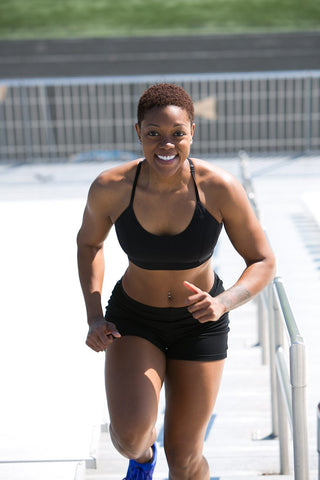“What puts you over the top? It is the mind that actually creates the body, it is the mind that really makes you work out.. it is the mind that visualizes what the body ought to look like as the finished product.”
- Arnold Schwarzenegger

Click HERE to check out: The Weightlifting Gym buddy Journal:
A complete 12-week personal training book & program in a journal you use to track your progress.
_____________________________
Best Gym & Home Deltoid Exercises (Includes Rear Delt Exercises)
Why Shoulder Development Is So Important
Shoulder development is crucially important in bodybuilding - whether or not you're doing it with weights.
Any time you're trying to change the way your body looks, shoulder exercises are going to be an important part of the overall scheme.
Here's why:
- The shoulders/deltoids are at work when performing most upper-body exercises and thus need to be strong enough to perform those exercises without risking injury.
- Shoulder development improves the way the biceps, triceps, chest, and back look.
- Shoulder muscles are involved in essentially every physical movement you make
- Shoulder joints can be delicate; Deltoid exercises protect the joint by building muscle around it
- Deltoid exercises can improve posture, and help develop an overall more stable body structure
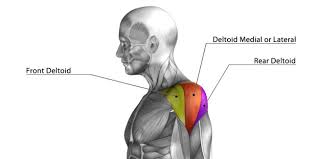
Super Quick Deltoid Anatomy
The deltoid muscle is split into three distinct parts:
1. Anterior or front delt (the front of the shoulder)
2. Medial or lateral delt (middle of the shoulder)
3. Posterior or rear delt (back part of the shoulder - partially looks like it is a part of your back)
Most shoulder exercises work all three parts of the muscle simultaneously.
But in order to really develop the muscle in its totality, each of the three parts of the deltoid muscle needs to be trained with unique exercises.
So many people accidentally training rear delts because the most common shoulder exercises don't train the back of the shoulder quite so much. We'll correct that down below and provide some examples of awesome rear delt exercises you can do at home and at the gym.
Anterior & Lateral Deltoid Exercises In The Gym
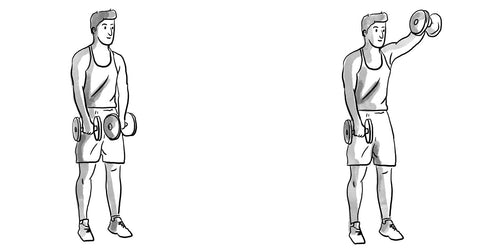
Front Dumbbell Raise
Part of the shoulder being trained: Anterior deltoid exercise
Equipment needed: Dumbbells
How to do it:
-
Stand upright with your feet hip-width apart. Grasp one dumbbell with each hand so that your palms are facing inward and hands are against your thighs.
-
While keeping your torso stationary, lift the dumbbells in front of you with a straight arm or slightly bent elbow. Continue to raise the dumbbell until your arm is slightly above parallel to the ground or around shoulder-level.
-
Slowly lower the dumbbells back to the starting position.
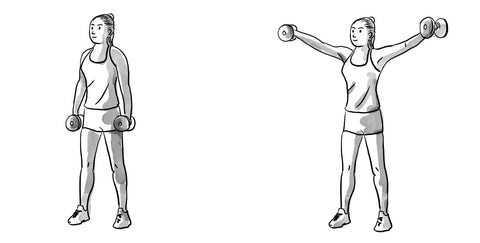
Part of the shoulder being trained: Lateral deltoid exercise
Equipment needed: Dumbbells
How to do it:
-
Stand upright with your feet shoulder-width apart and dumbbells aligned with your feet at arm's length. Make sure your palms are facing inward towards your sides.
-
Keep your torso stationary and raise the dumbbells to your side with a slight bend at your elbow. Lift your arms until they are slightly parallel to the ground, or around shoulder- level, and pause for a second at the top.
-
Slowly lower the dumbbells back to the starting position.
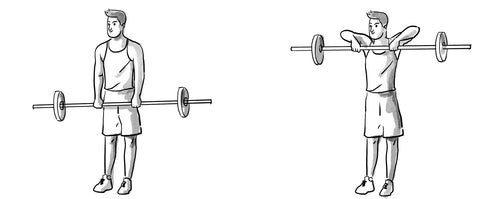
Barbell Raise
Part of the shoulder being trained: Medial deltoid exercise
Equipment needed: Barbell, plate weights
How to do it:
-
Stand upright with your feet shoulder-width apart. Grasp the barbell with an overhand grip that is slightly less than shoulder-width apart. The bar should be in front of your thighs with your arms extended and your palms facing your body.
-
Use the sides of your shoulders to lift the bar up towards your chest and drive your elbows up and to the side. Keep the bar close to your body as you raise it.
-
While keeping your elbows flared out, continue to lift the bar until it’s at your upper chest level. Keep your torso stationary and pause for a second at the top of the movement.
-
Slowly lower the bar back to the starting position.
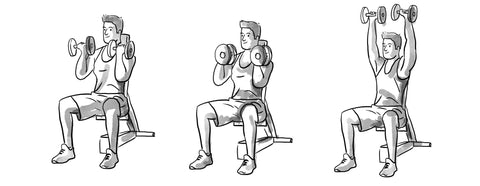
Arnold Dumbbell Press
Part of the shoulder being trained: Anterior deltoid exercise & Lateral deltoid exercise
Equipment needed: Dumbbells
How to do it:
-
Sit on the military press bench, or any utility bench that has a back support, and hold two dumbbells in front of you at about upper-chest level. Your palms should be facing your body your elbows bent and tucked in.
-
Next, in the middle of the movement, raise the dumbbells as you rotate your palms until they are facing forward.
-
Continue raising the dumbbells until your arms are fully extended above you.
-
After a pause at the top, begin to lower the dumbbells, rotating your palms towards you.
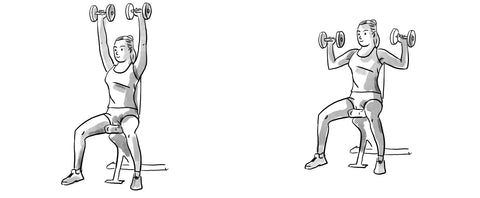
Seated Dumbbell Press
Part of the shoulder being trained: Anterior deltoid exercise & Lateral deltoid exercise
Equipment needed: Dumbbells, seated bench
How to do it:
-
Sit on a military press bench, or any utility bench that has a back support, and hold two dumbbells upright on the top of your thighs.
-
With your palms facing each other, lift the dumbbells up (one at a time) to shoulder-level.
-
Then, rotate your wrists so that your palms are facing upward toward the ceiling.
-
Press your dumbbells up and toward each other, without jerking your back.
-
Slowly lower them until they return to the starting position.
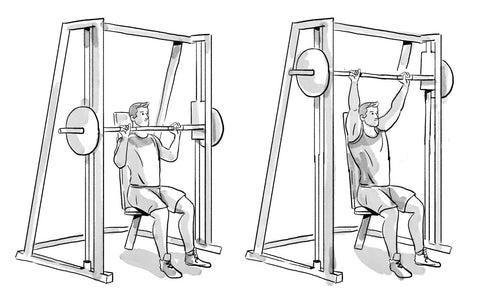
Seated Smith Machine Shoulder Press
Part of the shoulder being trained: Anterior deltoid exercise & Medial deltoid exercise
Equipment needed: Smith machine, plate weights
How to do it:
-
Sit on a bench with a back support directly underneath the barbell of a Smith machine. Grip the bar with a double overhand grip, slightly wider than shoulder-width apart at just above shoulder height.
-
Gripping the bar as tight as possible, press it overhead until your arms are completely locked out. Pause at the top, then lower it back to the starting position.
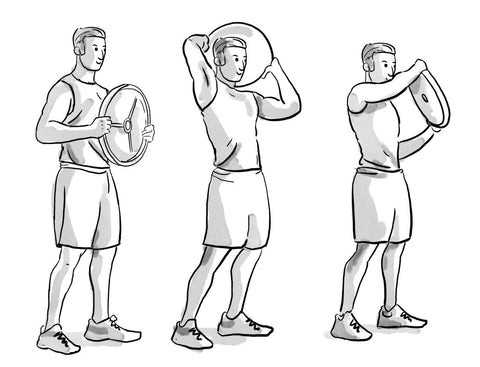
Part of the shoulder being trained: Anterior deltoid exercise, Lateral deltoid exercise, & Posterior deltoid exercise
Equipment needed: Plate weight
How to do it:
-
With elbows slightly bent, take a weighted plate and hold it out in front of your body with both hands.
-
Rotate the weight clockwise around the back of your head and back out to starting position.

Underhand Barbell Front Raise
Part of the shoulder being trained: Anterior deltoid exercise
Equipment needed: Barbell, plate weights
How to do it:
-
Grasp a barbell/straight bar/EZ bar with an underhand grip that is slightly less than shoulder-width. Stand with feet shoulder-width apart. Your back should also be straight. This will be your starting position.
-
Keeping your arms straight, drive the bar upwards, focusing on using the front of your shoulder to perform the movement. Keep your your traps relaxed so your shoulders do not move up towards your head as you perform the movement.
-
Lower the bar back down slowly to the starting position, keeping your arms straight.
*The underhand grip helps to engage more of your front shoulder, so throw this into your shoulder workouts when you see fit!
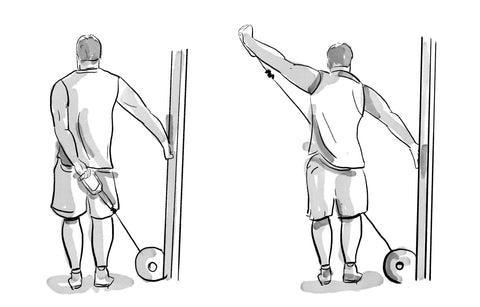
Behind the Back Lateral Cable Raise
Part of the shoulder being trained: Lateral deltoid exercise
Equipment needed: Cable machine, handle pully
How to do it:
-
Set the pulley to the lowest position. Reach behind your back and grab the handle firmly.
-
Maintain a slight bend in your elbow as you exhale and elevate your arm straight up to your side.
-
Raise your arm up to shoulder-height and slowly return your arm back down to the starting position.
-
Allow your arm to descend deep enough to stretch your deltoid and repeat.
Rear Deltoid Exercises In The Gym

Reverse Fly
Part of the shoulder being trained: Posterior deltoid exercise
Equipment needed: Fly machine
How to do it:
-
On the reverse fly machine (which sometimes doubles as a chest fly machine), adjust the handles so that they are fully facing the rear (closest together). Adjust the seat height to make the handles at your shoulder-level. Sit on the seat with your chest against the pad and grasp the handles with your palms facing inwards.
-
Pull your hands out to your sides and back as far as possible. This should make a semicircular motion where you should feel a stretch in your shoulders.
-
Pause at the back of the movement, and slowly return the weight to the starting position.
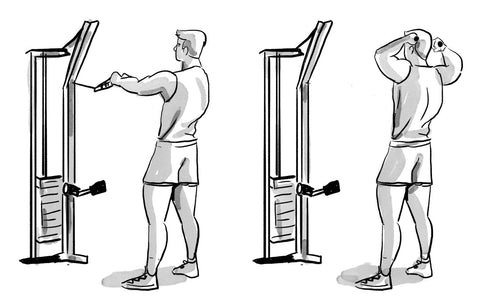
Face Pull
Part of the shoulder being trained: Posterior deltoid exercise
Equipment needed: Cable machine, rope
How to do it:
-
Stand in front of a medium-height rotating pulley and grab each side of the rope attachment.
-
Step back away from the machine until your arms are fully extended in front of you.
-
Your feet should be slightly wider than shoulder width apart and with a soft bend in your knees.
-
Brace core and drive elbows past back, while pulling the rope handles slightly outside of your ears.
-
Hold and contract shoulder blades together.
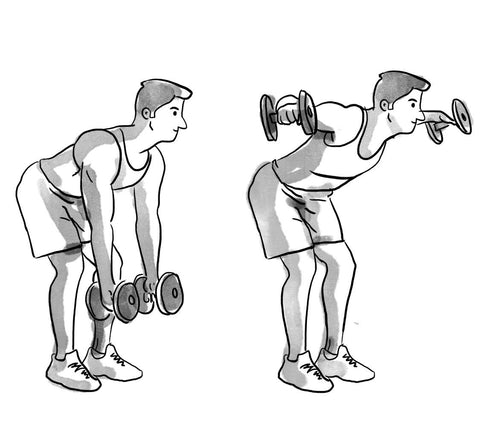
Bent Over Rear Delt Raise
Part of the shoulder being trained: Posterior deltoid exercise
Equipment needed: Dumbbells
How to do it:
-
Grab a dumbbell in each hand with the palms facing each other (neutral grip). Bend your torso so that you’re at a 90 degree angle, with your torso parallel to the floor.
-
Let your arms hang with the dumbbells in them.
-
Maintaining the slight bend of the elbows, move the weights out and away from each other (to the side) in an arc motion while. Try to raise them as high as possible, aiming to squeeze your shoulder blades together.
-
The arms should be elevated until they are parallel to the floor.
-
Feel the contraction and slowly lower the weights back down to the starting position.
-
Repeat for the recommended amount of repetitions.
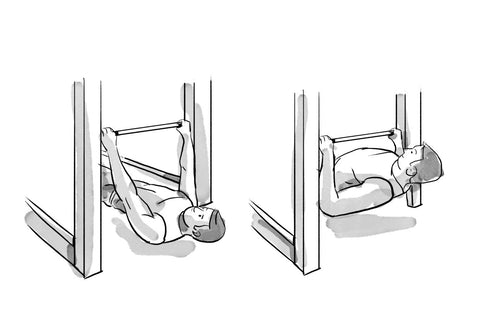
Inverted Smith Machine Row
Part of the shoulder being trained: Posterior deltoid exercise
Equipment needed: Dumbbells
How to do it:
-
Lie on the floor underneath the bar (which should be set just above where you can reach from the ground). You should be as close to parallel to the ground as possible!
-
Grab the bar with an overhand grip (palms facing AWAY from you).
-
Contract your abs, and try to keep your body a completely straight line. Your ears, shoulders, hips legs, and feet should all be in a straight line.
-
Pull yourself up to the bar until your chest touches the bar.
-
Lower yourself back down.
*If this is difficult for you, place the bar higher on the smith machine, and stand a little bit more vertically.
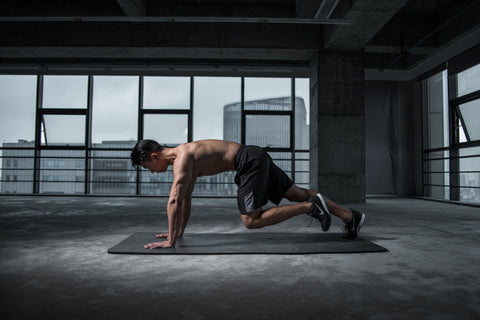
Anterior, Medial, & Posterior Deltoid Exercises At Home
*Note: If you have dumbbells at home, you can of course do any of the exercises above that only require dumbbells when you're at home.
The following are bodyweight only shoulder exercises that can be done at home without ANY equipment at all.

Towel Snatch
Part of the shoulder being trained: Full shoulder exercise
Equipment needed: Towel
How to do it:
-
Grab a towel, t-shirt, band, or any sturdy, lightly stretchable object you can pull between your hands. Hold the ends of it and let your hands naturally drop down below your waist as if you were simply holding it.
-
Hold the object taught, as if you’re attempting to rip it in half (make sure you’ve chosen a fabric that can withstand this).
-
As you pull it, keep you hands and arms straight and do not move your elbows. Move your hands up from your body, all the way over your head, and then bring them back towards your waist, ensuring that you are pulling the object the entire time.
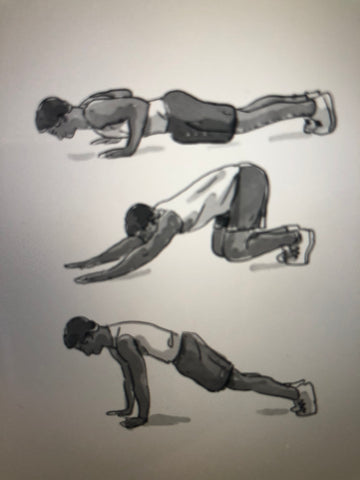
Reverse Push Up
Part of the shoulder being trained: Full shoulder exercise
Equipment needed: None
How to do it:
-
Position yourself as though you're about to perform a traditional push up, arms extended and positioned slightly more than shoulder-width apart.
-
Bend at the knees, push your buttocks toward your ankles, pressing down on your hands, until your knees are at a 90° angle (possibly more, if you have long legs!)
-
Pause for a second, then slide your entire body forward until you are back in traditional push up position. This is one rep.
-
Doorframe Hold
-
Stand in a doorway, facing the doorjamb, feet hip-width apart. Bend both elbows at 90°, make a fist, and place your fists against the wall.
-
Press into the wall as if you were attempting to push through the wall and into your abdomen. Your shoulder should be engaged, but you shouldn’t move your shoulder at any point during this movement.
-
Hold for a count of 5 and release. Repeat.
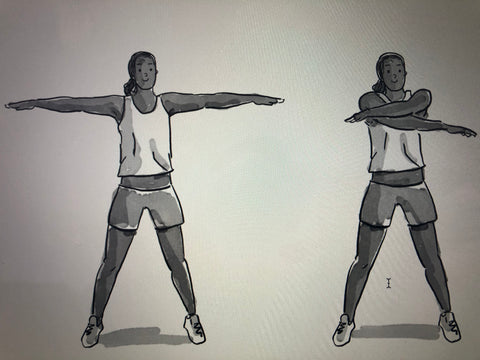
Arm Scissors
Part of the shoulder being trained: Full Shoulder Exercise
Equipment needed: None
How to do it:
-
Stand upright with feet shoulder-width apart and a slight bend in the knees.
-
Stretch your arms out to your sides, parallel with the ground.
-
Engage your core and cross your arms over one another in front of your body.
-
Quickly bring them back to starting position.
-
Do the same, but alternating which arm crosses over the other. This completes one rep.

Pike Push-Up
Part of the shoulder being trained: Full shoulder exercise
Equipment needed: None
How to do it:
-
Position your body as though you were going to perform a plank, with your body forming a straight line from head, hips, and heels.
-
Engage your core and begin to lift your hips toward the ceiling. At the same time, walk your hands towards your feet.
-
Once your torso is nearly perpendicular to the ground, position your hands wider than your shoulders. Shift your weight to your hands and move your feet so you are on your toes.
-
Gaze toward your toes to keep your head neutral and begin to bend your elbows, lowering your head toward the floor.
-
Once you’ve lowered as far as you can, push yourself back up to complete one rep.
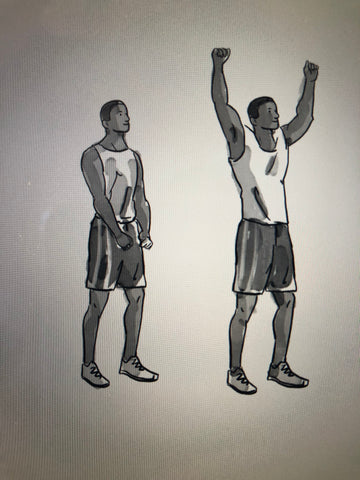
Y Raises
Part of the shoulder being trained: Full shoulder exercise
Equipment needed: None
How to do it:
-
Stand upright, feet shoulder-width apart.
-
With a slight bend in your elbows, raise your arms upward and out to the sides, making a “Y” formation until elbows are aligned with each ear. Contract shoulder muscles.
-
Slowly lower arms, maintaining control to complete one rep.
-
Remember, the point is to feel the resistance and tension. Keep your shoulder muscles flexed throughout the movement.
Things to ALWAYS Keep In Mind When Training Shoulders
- There is a lot of natural swinging that happens when we work shoulders, and you have to stay mindful of that and not use momentum for the movement.
The whole point is the contraction so using the momentum of the swing doesn’t do much. Doing 6 good reps is better than 15-20 swinging reps!
- Relax the shoulders and traps, let them fall down and back... and keep them there!

